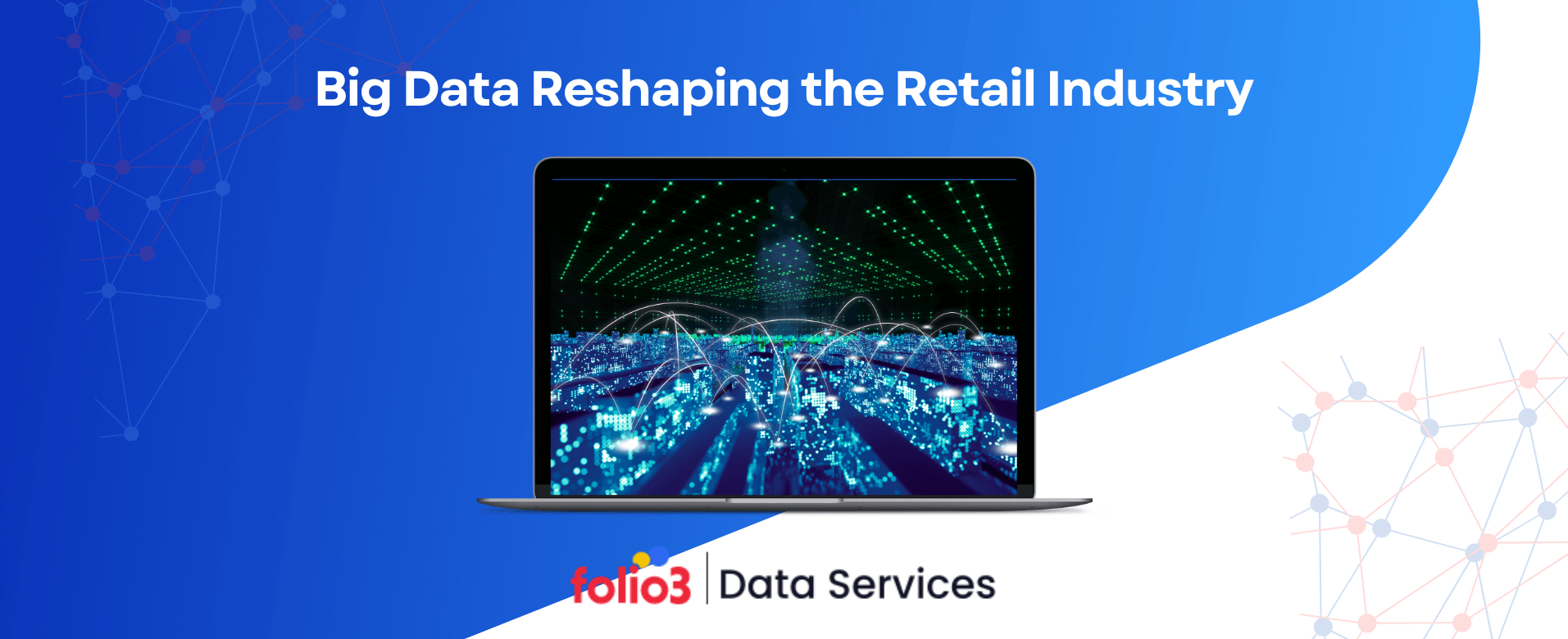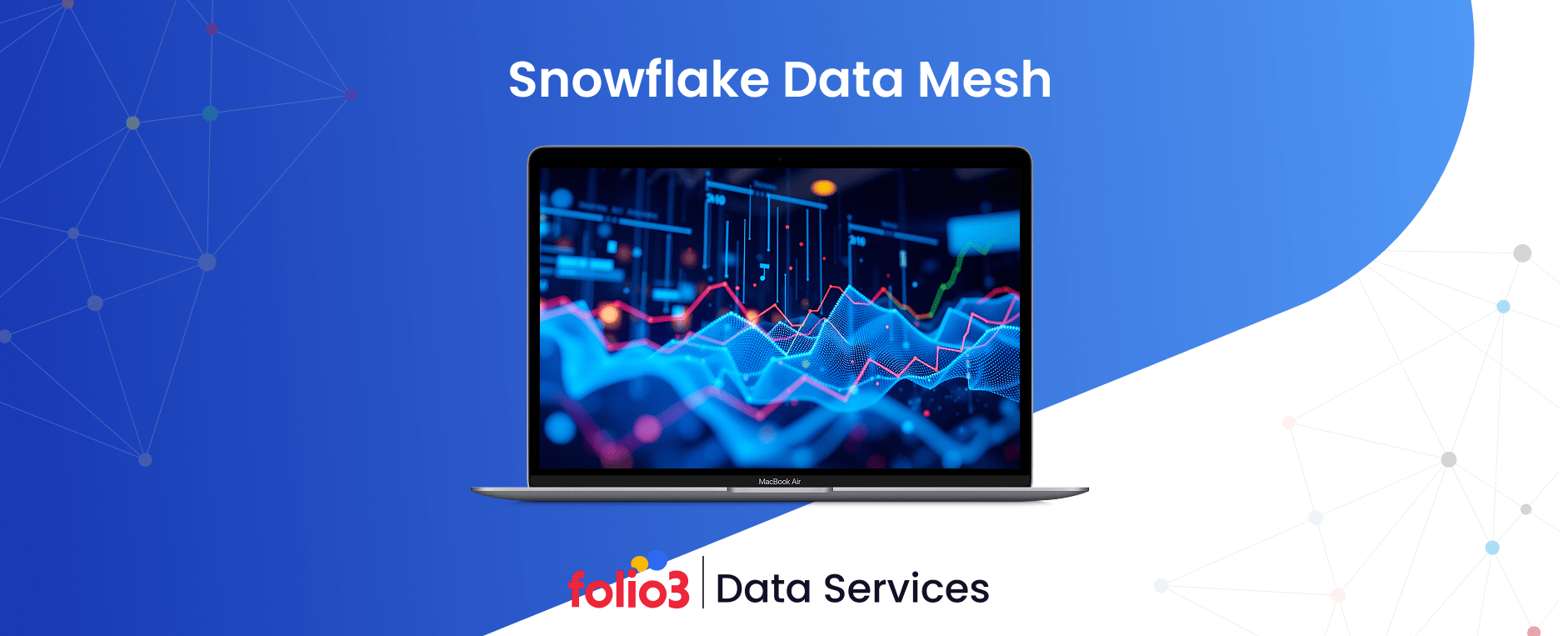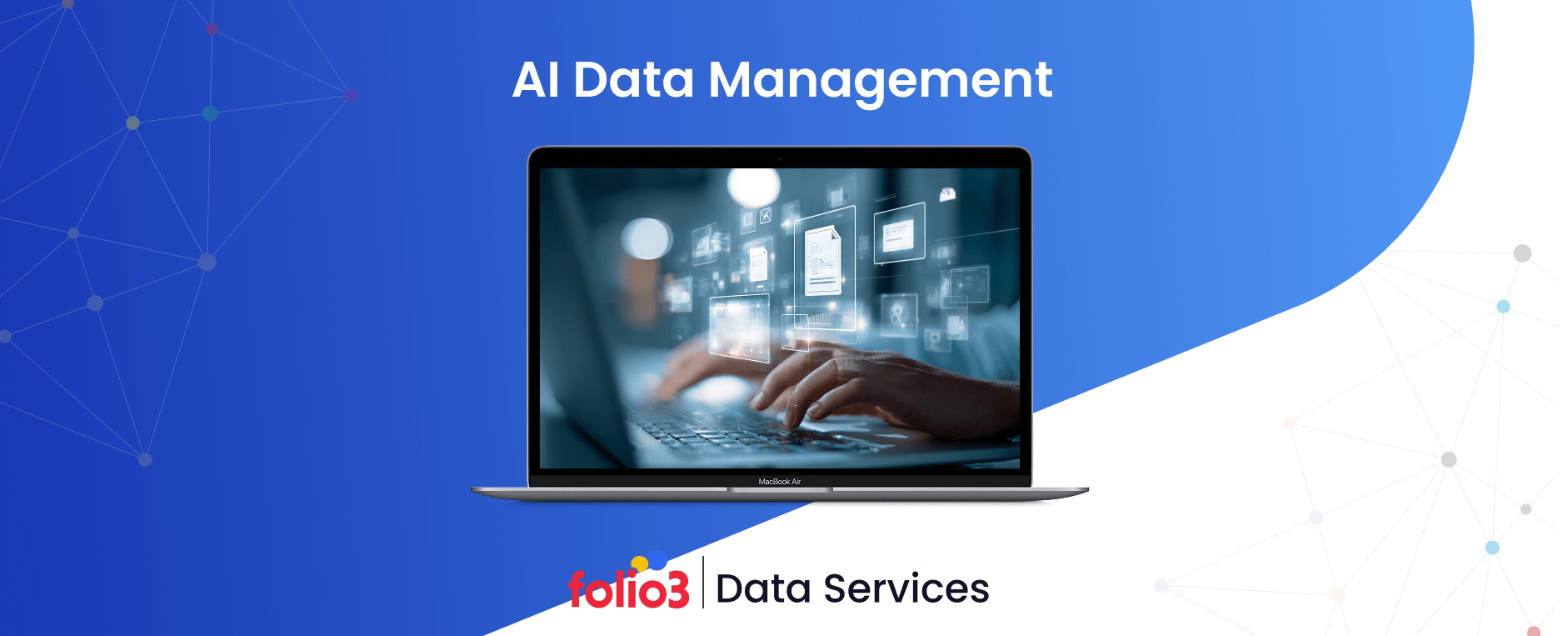The integration of big data has become a pivotal force, reshaping how businesses operate and engage with consumers in the revolving retail industry. By analyzing vast amounts of information, retailers can gain valuable insights into customer behaviors, preferences, and market trends, enabling them to make informed decisions and stay competitive.
Big data analytics in retail is reshaping how businesses understand customers, optimize operations, and make data-driven decisions. By analyzing structured and unstructured datasets, retailers can uncover trends, predict demand, and enhance marketing strategies.
This strategic use of big data in the retail industry ensures companies stay competitive by personalizing customer experiences, optimizing inventory, and improving operational efficiency.
According to a survey, during Black Friday 2024, U.S. online sales reached a record $10.8 billion, a 10.2% increase from 2023, highlighting the impact of data-driven strategies on consumer spending. The importance of using data in the highly competitive retail sector cannot be overstated.
Retailers are increasingly adopting technologies such as artificial intelligence (AI) and machine learning to personalize shopping experiences, optimize inventory management, and enhance operational efficiency.
In the UK, for example, retailers are using AI-enhanced cameras to manage stock and customer interactions, demonstrating the transformative potential of big data analytics in retail operations. This article aims to explore the transformative role of big data in the retail industry, examining how retail big data analysis is being utilized to drive growth and innovation.
Key Applications of Big Data in Retail
The transformative potential of big data in the retail industry lies in its ability to address core business challenges and unlock new opportunities. Here are some of the key applications that demonstrate how big data analytics in the retail market is reshaping the sector.
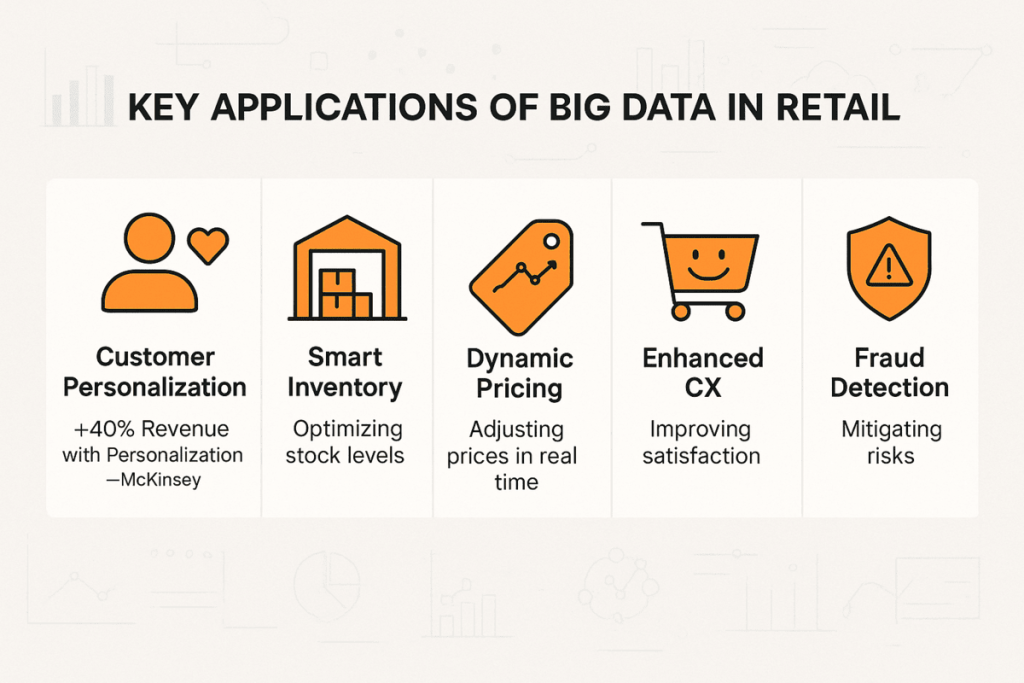
Retailers are leveraging big data in several innovative ways. Common big data retail use cases include:
- Customer Personalization: Targeted promotions and personalized recommendations based on purchase history.
- Inventory Management & Demand Forecasting: Predicting stock requirements to prevent overstock and stockouts.
- Dynamic Pricing Strategies: Adjusting prices in real-time based on competition, demand, and trends.
- Fraud Detection & Prevention: Identifying unusual transactions to protect against loss.
- Enhancing Customer Experience: Optimizing store layouts, checkout processes, and loyalty programs.
1. Customer Personalization
Retailers use big data analytics in the retail sector to tailor offerings that align with individual customer preferences. Personalized recommendations, dynamic email campaigns, and targeted advertisements are now possible thanks to retail big data analysis.
For instance, according to a 2023 report by McKinsey, companies using personalized marketing strategies see up to a 40% increase in revenue. This demonstrates how big data is transforming retail industry approaches to customer engagement.
2. Inventory Management and Demand Forecasting
Accurate inventory management and demand forecasting are critical in retail. By leveraging big data, retailers can predict demand spikes, avoid stockouts, and minimize overstock. Companies often turn to data analytics services to implement these predictive capabilities effectively and optimize supply chain performance.
Big data analytics in retail supply chain enables real-time tracking of inventory, demand forecasting, and logistics optimization. By integrating data from warehouses, point-of-sale systems, and suppliers, retailers can ensure product availability while minimizing storage and transportation costs.
Walmart uses big data to manage inventory across its thousands of stores, ensuring efficiency and minimizing losses. A case study revealed that using big data in retail improved Walmart’s inventory accuracy by over 30%.
3. Pricing Strategies
Dynamic pricing strategies powered by big data analytics in the retail market enable businesses to adjust prices based on real-time factors such as demand, competition, and consumer behavior.
For example, Amazon’s pricing engine evaluates millions of price points daily to remain competitive. In 2023, this approach helped the company maintain its dominant market position, boosting sales by approximately 20% year-over-year. Such adaptive pricing models are among the most impactful big data retail use cases, and a core part of any robust data analytics strategy aimed at maximizing revenue and market responsiveness.
Big data is revolutionizing retail marketing analytics by providing insights into customer behavior, campaign performance, and market trends. Retailers can segment audiences more effectively, personalize messaging, and measure ROI on campaigns in real time.
Tools like Snowflake and Tableau allow businesses to integrate large datasets from online and offline channels to fine-tune promotions, optimize ad spend, and improve customer engagement.
4. Enhancing Customer Experience
The use of big data in retail is instrumental in creating seamless and engaging shopping experiences. Retailers utilize customer feedback, transaction data, and browsing behavior to improve store layouts, simplify checkout processes, and introduce loyalty programs.
Sephora, for instance, uses big data to offer tailored beauty recommendations both online and in-store, which significantly enhances customer satisfaction. Data from Forbes in 2024 highlighted that companies prioritizing customer experience improvements through data saw an increase in brand loyalty.
Effective big data and knowledge management in retail allows companies to convert raw data into actionable insights. Centralized data warehouses and analytics platforms consolidate information from multiple channels, enabling teams to make faster and more informed decisions.
By combining analytics with knowledge management, retailers can optimize marketing campaigns, improve operational workflows, and predict market trends with confidence.
5. Fraud Detection and Prevention
Big data analytics in the retail industry is also transforming fraud detection. By analyzing transaction patterns, location data, and purchase histories, retailers can identify and prevent fraudulent activities.
PayPal’s big data-powered fraud prevention system saved the company over $500 million in 2023 by proactively flagging suspicious transactions. This demonstrates the critical role of retail big data analysis in ensuring secure shopping experiences.
Folio3’s retail analytics experts help you integrate, analyze, and act on your data for measurable business growth.
Benefits of Big Data in Retail
Big data in the retail industry is not just a technological advancement; it is a strategic advantage that empowers retailers to thrive in a competitive market. Here are some of the significant benefits that showcase how big data analytics in the retail sector drives success:
1. Improved Decision-Making Through Data-Driven Insights
Retailers can make more informed and timely decisions by analyzing vast amounts of data. From identifying market trends to tracking consumer behavior, retail big data analysis, coupled with customer analytics consulting, enables businesses to respond proactively.
For instance, a 2023 Gartner report revealed that 68% of retail executives attributed improved decision-making to the effective use of big data in retail. This data-driven approach minimizes guesswork and maximizes outcomes.
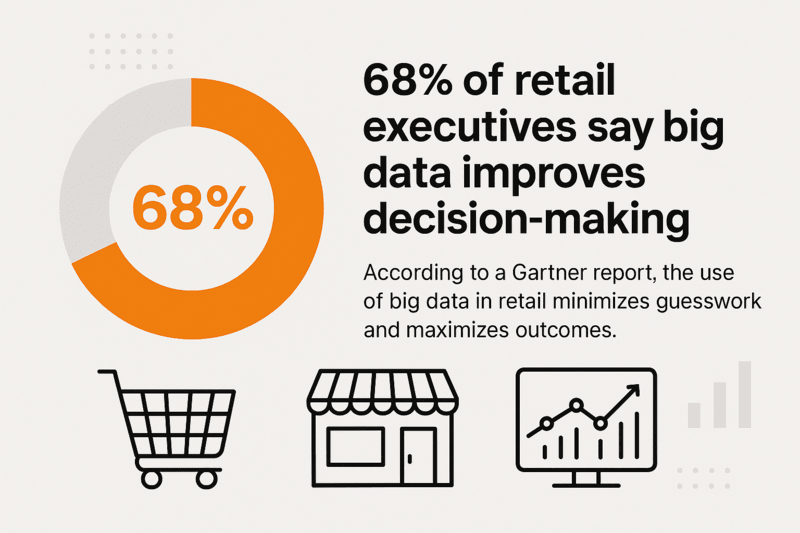
2. Enhanced Customer Loyalty and Retention
Big data analytics in the retail market helps retailers understand customer preferences and behavior, enabling personalized shopping experiences. Loyalty programs tailored using customer data, like those implemented by Starbucks, have proven to boost retention rates significantly.
In fact, Starbucks’ Rewards program contributed to a 21% year-over-year increase in customer retention in 2023, demonstrating how big data is transforming retail industry efforts to build lasting customer relationships — a key pillar of effective data analytics and digital transformation strategies.
The role of data analytics in retail industry is central to improving decision-making, customer satisfaction, and operational efficiency. Data-driven insights allow retailers to optimize pricing, enhance marketing campaigns, and improve inventory management. Analytics also enables small and large retailers alike to make proactive, informed business decisions.
3. Cost Savings Through Operational Efficiency
The use of big data in retail optimizes supply chain operations, inventory management, and workforce allocation, reducing unnecessary costs. A Deloitte study from 2024 indicated that retailers employing big data analytics in retail industry operations achieved up to 25% cost savings by streamlining processes. This efficiency translates into better resource allocation and improved profitability, especially when guided by expert data strategy services that align analytics efforts with business goals.
4. Increased Revenue Through Targeted Marketing and Upselling Opportunities
By analyzing purchase histories and customer demographics, retailers can craft highly targeted marketing campaigns. This not only boosts sales but also opens upselling opportunities. For example, retail giant Target utilized big data to predict customer needs, resulting in a 16% revenue increase in 2023. Big data analytics in the retail market allows businesses to identify what customers want, when they want it, and how to present it effectively.
How Retailers Can Start Making the Most of the Big Data?
As the retail sector continues to evolve, adopting big data analytics has become essential for businesses looking to stay competitive. Retailers who effectively use data can enhance decision-making, boost customer satisfaction, and drive operational efficiencies. Leveraging data analytics consulting services can simplify the process, especially for businesses unfamiliar with big data.
Here’s a detailed guide on how retailers can begin their journey toward using big data:
Steps to Implement Big Data Solutions in Retail Businesses
Identify Business Objectives and Data Needs
The first step in using big data in retail is understanding the business objectives. Retailers should define specific goals, such as improving inventory management, enhancing customer personalization, or optimizing pricing strategies.
Once the objectives are clear, businesses can assess what data is necessary to achieve those goals. This could include sales data, customer demographics, online browsing behavior, and inventory levels—laying the foundation for effective big data implementation.
Collect and Integrate Data from Multiple Sources
Big data solutions require access to diverse datasets. Retailers need to integrate data from various sources, including in-store transactions, online platforms, supply chain management systems, and customer feedback. It’s crucial to collect both structured (e.g., sales records) and unstructured (e.g., customer reviews or social media posts) data to gain a holistic view of business performance.
Real-time data integration for retail ensures that decision-makers have up-to-the-minute insights into sales, inventory, and customer interactions. By combining POS systems, e-commerce platforms, and supply chain data, retailers can respond immediately to demand changes and operational bottlenecks.
Partnering with data integration consulting experts can help streamline this process, ensuring that all data sources are efficiently connected and aligned with business goals.
Cleanse and Organize the Data
Data quality is critical for accurate insights. Retailers should cleanse and organize data to remove inconsistencies, duplicates, or irrelevant information. This step ensures that the analysis is based on reliable data, leading to more accurate results. Retailers can use data wrangling tools or hire data specialists to ensure their data is well-prepared for analysis.
Analyze Data with Advanced Analytics Tools
Once the data is collected and prepared, retailers can start analyzing it to gain valuable insights. Big data analytics in the retail industry typically involves using machine learning algorithms, big data predictive analytics, and data visualization tools to uncover trends, patterns, and actionable insights. Retailers should focus on analyzing customer behavior, sales trends, inventory levels, and pricing strategies to drive key business decisions.
Implement Real-Time Monitoring and Reporting
Retailers should consider adopting real-time data monitoring to track key performance indicators (KPIs) and make immediate adjustments. Real-time analytics can provide insights into current sales performance, customer interactions, and inventory status. This allows businesses to respond quickly to emerging trends and challenges, ensuring they stay ahead of the competition.
Big data solutions for retail combine cloud platforms, analytics tools, and consulting services to deliver actionable insights. Platforms like Snowflake, Google BigQuery, and Tableau empower retailers to store, process, and visualize large datasets efficiently.
Solutions can be tailored to:
- Predict demand and optimize inventory
- Personalize customer experiences
- Analyze marketing campaign effectiveness
- Reduce operational costs and increase profitability
Tools and Platforms for Big Data Analytics in Retail
To efficiently analyze big data and extract meaningful insights, retailers need the right tools and platforms. Here are some of the most popular and powerful tools used in the retail big data analysis:
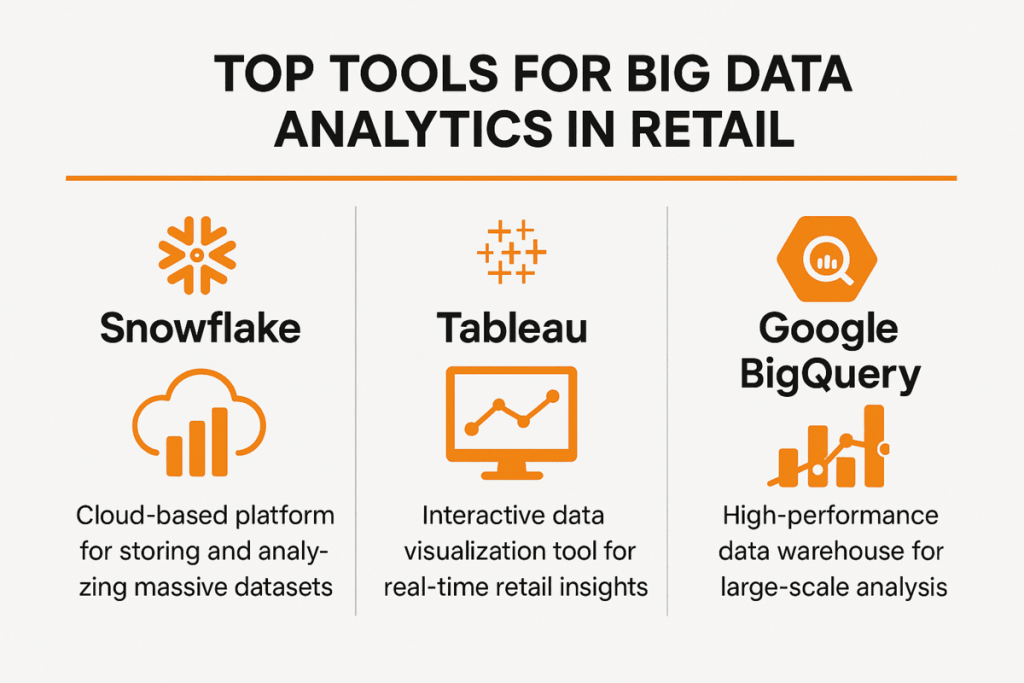
1. Snowflake
Snowflake is a cloud-based data platform that allows retailers to store and analyze vast amounts of structured and unstructured data. Its scalable architecture and advanced analytics capabilities make it a popular choice for big data analytics in the retail sector. Many businesses also turn to Snowflake consulting services to accelerate implementation, optimize performance, and ensure seamless integration with existing systems. This enables retailers to run complex queries, share data across teams, and make faster decisions based on real-time insights.
2. Tableau
Tableau is a leading data visualization tool that enables retailers to turn raw data into interactive and easy-to-understand visual reports. By using Tableau, retail businesses can create dashboards that showcase important metrics, such as customer engagement, sales performance, and inventory levels. This helps decision-makers quickly identify trends and make data-driven choices to optimize operations.
3. Google BigQuery
Google BigQuery is another powerful tool for big data analytics, offering fast SQL queries and scalable storage capabilities. Retailers can use BigQuery to analyze massive datasets and gain insights into customer behavior, sales patterns, and operational efficiency. The tool’s ability to handle large volumes of data and integrate with other Google Cloud products makes it an ideal choice for retailers looking to implement big data solutions.
Partnering with retail industry data mining and analytics consulting services can accelerate big data adoption. Consultants help design analytics strategies, implement data pipelines, and integrate platforms like Snowflake, Google BigQuery, and Tableau.
Consulting ensures that data is accurate, actionable, and aligned with business goals, while also helping with real-time monitoring, predictive analytics, and performance optimization.
Partnering with Data Experts and Consultants for Seamless Adoption
For many retailers, transitioning to big data solutions can be a complex process, especially if they lack in-house expertise. Partnering with data experts or consultants like Folio3 Data can help ensure a smooth and successful implementation of big data solutions. These experts can assist in:
- Data Strategy and Planning: Consultants can help retailers develop a tailored data strategy that aligns with business goals and objectives, ensuring that the right data is collected and analyzed.
- Technology Integration: Data experts can guide the integration of big data platforms like Snowflake, Tableau, and Google BigQuery into existing retail systems, ensuring compatibility and a seamless workflow.
- Training and Support: Consultants can provide training for staff, helping them understand how to use big data tools effectively. Ongoing support can also help retailers adjust and refine their data strategies as their business evolves.
- Data Privacy and Security: Ensuring the privacy and security of customer data is crucial in the retail industry. Data experts can help implement best practices for data governance, ensuring that retailers comply with privacy regulations such as GDPR and maintain customer trust.
With Folio3’s consulting support, retailers achieve faster adoption, stronger governance, & measurable business outcomes.
FAQs
What is big data analytics in retail?
Big data analytics in retail involves analyzing large volumes of structured and unstructured data to uncover customer insights, optimize operations, and drive revenue. It helps retailers make informed decisions about inventory, pricing, marketing, and customer experience.
How is data used in the retail industry?
Data in the retail industry is used to analyze customer behavior, optimize inventory, personalize marketing, and improve pricing strategies. By using customer data, retailers can enhance operational efficiency and drive growth.
What are the key big data use cases in retail?
Common big data retail use cases include customer personalization, demand forecasting, pricing optimization, inventory management, fraud detection, and enhancing the overall shopping experience. These use cases help retailers stay competitive and data-driven.
What is the role of big data analytics in the retail supply chain?
Big data analytics in retail supply chain enables real-time inventory tracking, demand forecasting, and logistics optimization. Retailers can reduce stockouts, minimize overstock, and streamline operations by integrating data across stores, warehouses, and suppliers.
How does knowledge management work with big data in retail?
Big data and knowledge management in retail help centralize information from multiple sources, turning raw data into actionable insights. This enables retailers to make faster, informed decisions, optimize marketing strategies, and improve operational workflows.
Why do retailers need data mining and analytics consulting?
Retailers benefit from data mining and analytics consulting by leveraging expert guidance to design analytics strategies, implement data pipelines, and integrate tools like Snowflake or Tableau. This ensures accurate insights and smooth adoption of big data solutions.
In what ways can big data help small retail shops?
Big data helps small retail shops by enabling personalized customer experiences, optimizing inventory management, and identifying sales trends. These insights allow small retailers to compete effectively with larger businesses by making data-driven decisions.
In what ways does big data contribute to improved decision-making within retail?
Big data enables retailers to make informed decisions by analyzing trends, customer preferences, and operational performance. This leads to more accurate forecasting, better stock management, and targeted marketing, ultimately improving profitability.
How is digital transformation changing the retail industry?
Digital transformation in retail is shifting how businesses interact with customers through e-commerce platforms, mobile apps, and personalized experiences. It’s improving operational efficiency, customer service, and inventory management, while enhancing data analytics for strategic decision-making.
How can big data improve inventory management in retail?
Using inventory management with big data, retailers can predict demand, optimize stock levels, and reduce wastage. Real-time insights help in maintaining the right inventory at the right locations, improving efficiency and profitability.
How is big data changing retail marketing analytics?
Big data is revolutionizing retail marketing analytics by providing deep insights into customer behavior, preferences, and purchasing patterns. Retailers can use these insights to create personalized campaigns, optimize pricing, measure campaign effectiveness in real time, and target the right audience with tailored promotions, resulting in higher engagement and increased sales.
What is real-time data integration for retail?
Real-time data integration for retail allows businesses to synchronize data from multiple sources—such as POS systems, e-commerce platforms, and supply chain systems—as it is generated. This ensures immediate access to up-to-date insights, enabling faster decision-making, better inventory management, and more responsive marketing strategies.
How can retailers improve retail data pipeline performance?
Retailers can improve data pipeline performance by optimizing ETL processes, reducing data latency, and leveraging scalable platforms like Snowflake or Google BigQuery. Efficient pipelines enable faster data processing, more accurate analytics, and real-time insights that enhance operational efficiency and customer experience.
Conclusion
Big data is revolutionizing the retail industry by empowering businesses to enhance customer experiences, optimize operations, and make data-driven decisions. Retailers can make the most of the power of big data through strategic implementation, advanced analytics tools, and real-time insights. For seamless adoption, partnering with data experts and consultants is essential.
Folio3 offers specialized cloud and data services to help retailers implement robust big data solutions, ensuring a smooth transition, effective integration, and ongoing support for sustained growth.
